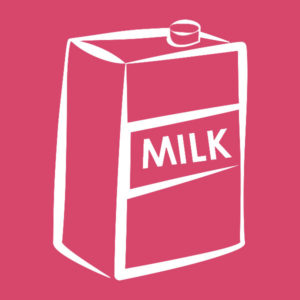
Sana’s mental health wellness retreat offers holistic treatments, including yoga, meditation, and nutrition counseling, in the tranquil landscape of Vermont. This approach provides emotional and physical balance, allowing individuals to regain control over their lives. Encourage them to talk about any issues they may be facing and listen attentively. Offer to help them find professional support, such as a counselor or a support group.
- BetterHelp offers affordable mental health care via phone, video, or live-chat.
- Heavy drinkers, also known as hard drinkers, consume alcohol in large quantities frequently.
- However, social drinking may have some negative effects and hidden risks that you need to be aware of.
Substance Abuse Treatment

If you or someone you know is struggling with alcohol consumption, it’s important to seek help and support from a medical professional or addiction specialist. No, because getting drunk often involves heavy drinking or binge drinking. If you regularly drink more than the definition of moderate drinking — 2 drinks per day for men, 1 drink per day for women — it’s a sign you may have a problem with alcohol. If you can control and stop your drinking, and alcohol is not causing any negative consequences, moderate drinking is considered a part of a healthy lifestyle. There are a few telltale signs that you might need to adjust your approach to social drinking to semi or full sobriety.
The Truth About Social Drinking vs Alcoholism and Addiction Risk

What’s the difference between social drinkers, problem drinkers and alcoholics? Education is vital, so people don’t put themselves at risk of developing an alcohol https://ecosoberhouse.com/article/what-is-alcohol-abuse-how-to-treat-alcoholism/ use disorder. Everyone should know the warning signs of alcoholism and not ignore when social drinking goes too far. According to the NIAAA, those individuals who drink in low risk patterns are defined as social drinkers. This demographic is classified as consuming no more than two drinks per day for men or one drink per day for women, according to the Centers for Disease Control and Prevention.
- Social drinking, while often harmless in moderation, carries risks such as binge drinking and impaired judgment.
- It’s crucial to seek professional help, such as addiction therapy, to address these psychological impacts effectively.
- In many cases, social drinking is accompanied by food and conversation, enhancing the overall experience.
- Problem drinking refers to alcohol consumption that interferes with our daily life or health and well-being.
- It’s essential for individuals who engage in social drinking to understand their own tolerance levels and make informed decisions about their consumption.
What Are the Differences between a Social Drinker and an Alcoholic?
- Calls to our general hotline may be answered by private treatment providers.
- Social drinking refers to the act of consuming alcoholic beverages in social settings, typically in moderation.
- Server intervention training programs, although varying in effectiveness, aim to prevent intoxication and impaired driving by educating servers about alcoholic beverages.
- It may even result in job loss if the person’s impairment is too severe or chronic.
- Often, confiding in a trusted friend or family member can provide a support system as you embark on the journey to recovery.
- “Binge drinking is also unhealthy, defined as reaching a blood alcohol level of 0.08.
- One example is the Sinclair Method (TSM), a medication-based approach to alcohol addiction treatment.
Recognizing these signs can help you or your loved ones assess their relationship with alcohol regularly. If an individual finds themselves questioning their drinking habits, seeking professional help for alcohol misuse is critical. Early intervention and treatment can prevent problematic drinking patterns from developing into alcoholism. In today’s social landscape, drinking is often a part of celebrations, gatherings, and relaxation. For many, a glass of wine with dinner or a cocktail at a gathering is a pleasant addition to life.
- Other effects of alcohol may include improper liver function and cirrhosis, cancer of the mouth, throat, breast, liver, and esophagus, and a weakened immune system.
- Let’s look at the definition of social drinking, why people drink socially, and some red flags to look out for.
- The social drinking definition is someone who regularly drinks alcohol in a variety of social settings.
- The main difference between social drinking and alcoholism is the amount of alcohol consumed and the extent to which it impacts an individual’s daily functioning.
Fundamentally, their respective motivation is distinct, as social drinking is guided by the need to socialize and enjoy with friends or family. At the same time, alcoholism is a true health condition that involves physical alcohol dependence. For some, it may be easy to distinguish between social drinking and alcoholism however, for many individuals, it can become extremely difficult to identify the difference. These factors include mental health issues, environmental influences, and genetic predisposition. Alcoholism, also referred to as alcohol use disorder (AUD), is a chronic condition that is characterized by the inability to stop or what is social drinking control alcohol consumption despite negative consequences. Alcoholism goes beyond social drinking and often involves a compulsive need to drink alcohol.

Social drinking can quickly shift into alcoholism if not monitored and managed appropriately. People may begin to drink more frequently or larger amounts during social situations; this can lead to physical and psychological alcohol rehab dependence on alcohol over time. Alcoholism is a chronic, progressive, and potentially life-threatening disorder characterized by an uncontrollable and compulsive craving for alcohol.






